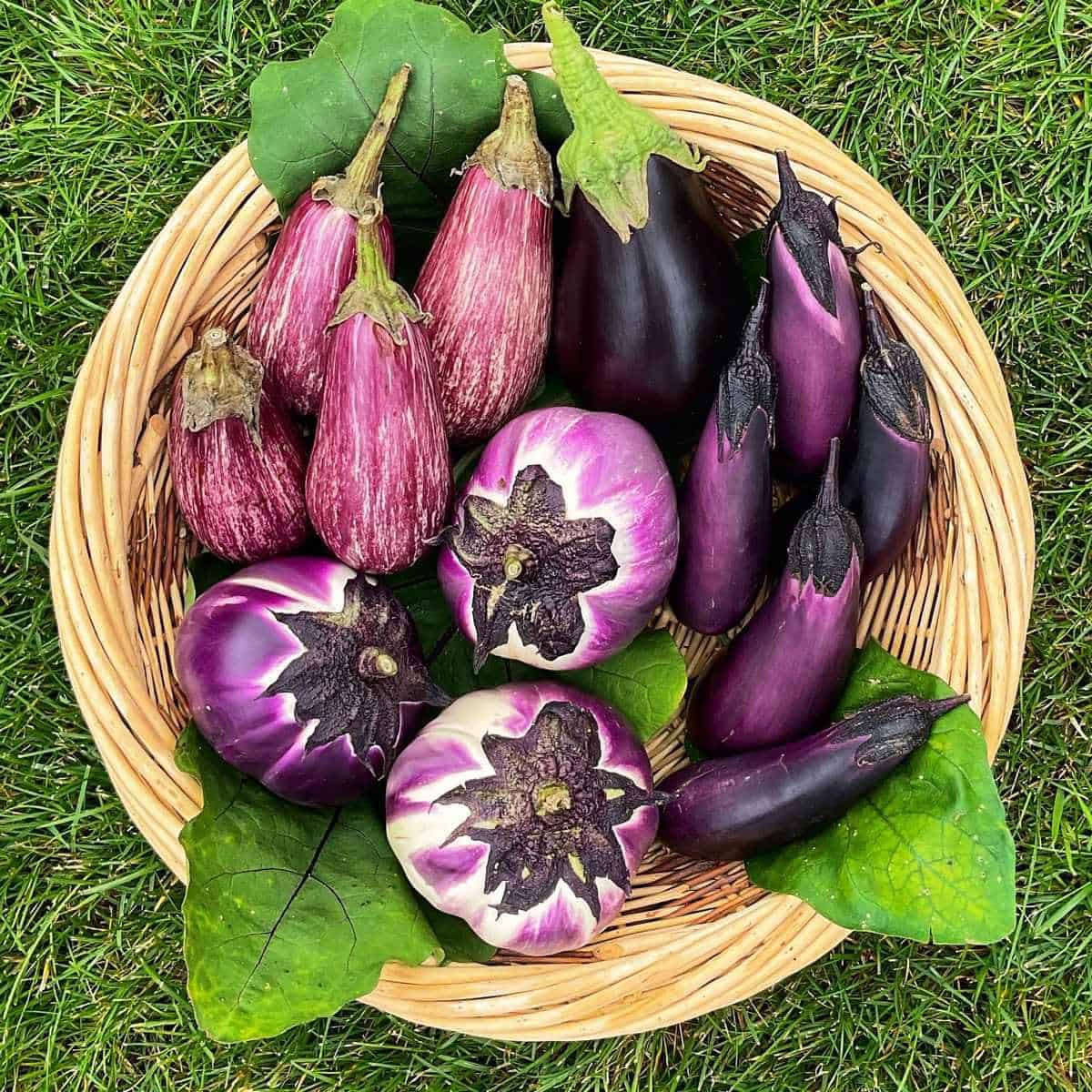

Articles
How To Store Grapefruit Long Term
Modified: August 17, 2024
Learn how to store grapefruit long term with our informative articles. Find helpful tips and tricks for preserving grapefruit freshness and flavor.
(Many of the links in this article redirect to a specific reviewed product. Your purchase of these products through affiliate links helps to generate commission for Storables.com, at no extra cost. Learn more)
Introduction
Grapefruit is a delicious citrus fruit known for its tangy flavor and vibrant, refreshing taste. Packed with essential vitamins and minerals, grapefruit is not only a healthy snack but can also be a versatile ingredient for various recipes. If you have a surplus of grapefruit or want to take advantage of its seasonal availability, knowing how to store it long-term can ensure that you can enjoy its goodness for an extended period.
In this article, we will explore different methods for storing grapefruit so that you can keep it fresh and flavorful for weeks or even months. Whether you prefer to store it in the refrigerator, a cool, dark place, or even freeze it, we will guide you through the process step by step.
Before diving into the storage methods, let’s first discuss how to choose and buy grapefruit to ensure you have the best quality fruit to start with.
Key Takeaways:
- Store grapefruit in the refrigerator, a cool, dark place, or the freezer to enjoy its tangy goodness for weeks or even months. Proper handling and care are essential for maintaining freshness.
- Choose firm, heavy grapefruits with smooth, glossy skin and a sweet aroma. Prepare them by washing, drying, and removing damaged spots before storing. Whether in the refrigerator, a cool, dark place, or the freezer, follow specific storage methods to keep grapefruit fresh and flavorful.
Read more: How To Store Barley Long Term
Choosing and Buying Grapefruit
When it comes to choosing grapefruit, there are a few key factors to consider to ensure that you select the best quality fruit. Follow these tips when buying grapefruit:
- Look for firmness: Choose grapefruits that are firm and heavy for their size. Avoid ones that feel soft or have any dents or bruises, as they may indicate overripe or damaged fruit.
- Check the skin: The skin of a ripe grapefruit should be smooth, glossy, and vibrant in color. Avoid fruits with blemishes, dullness, or a wrinkled appearance, as they may be past their prime.
- Consider the weight: Heavier grapefruits tend to have juicier flesh, so opt for fruits that feel weightier in your hand.
- Squeeze for firmness: Gently squeeze the grapefruit to ensure it feels firm but slightly yielding. Avoid fruits that are too soft or too hard, as they may be overripe or underripe.
- Smell for freshness: Take a sniff near the stem end of the grapefruit. A fresh fruit should have a sweet and fragrant aroma. If it has an off-putting or fermented smell, it’s best to choose a different one.
Once you have selected the perfect grapefruits, it’s time to prepare them for long-term storage. Let’s learn how to do that in the next section.
Preparing Grapefruit for Long-Term Storage
Before storing grapefruit for an extended period, it’s essential to properly prepare the fruit to maintain its freshness and flavor. Follow these steps to prepare grapefruit for long-term storage:
- Wash the fruit: Start by washing the grapefruit thoroughly under cool running water. Use a gentle scrub brush to remove any dirt or residue from the skin.
- Dry the fruit: After washing, pat the grapefruit dry with a clean towel or allow it to air dry completely. It’s important to ensure that the fruit is moisture-free before storage to prevent mold or decay.
- Remove any damaged spots: Inspect the grapefruit for any soft or damaged areas. Cut away these spots using a clean knife, ensuring that only healthy fruit remains.
- Consider segmenting the fruit: If you prefer to store individual grapefruit segments, you can peel and separate them from the membranes. This will make it easier to use the fruit later, especially for recipes or snacking.
- Keep the skin intact (optional): Alternatively, you can choose to store the grapefruit whole, with the skin intact. This method can help preserve the fruit’s moisture and flavor for a more extended period.
Once you have prepared the grapefruit, it’s time to explore the different methods you can use to store it for the long term. Let’s dive into those methods next.
Methods for Storing Grapefruit
There are several methods you can use to store grapefruit for an extended period. Each method offers its own benefits and considerations. Let’s explore the three main methods:
- Storing grapefruit in the refrigerator: The refrigerator is a convenient option for short to medium-term storage of grapefruit. Place the grapefruit in the crisper drawer or a plastic bag to prevent moisture loss. This method can keep the fruit fresh for up to 2-3 weeks.
- Storing grapefruit in a cool, dark place: If you don’t have access to a refrigerator or prefer to store grapefruit outside the fridge, a cool, dark place like a pantry or cellar can work well. Make sure the area is well-ventilated and away from direct sunlight. This method can keep the fruit fresh for up to 1-2 weeks.
- Storing grapefruit in the freezer: Freezing grapefruit is an excellent choice for long-term storage. Peel and section the grapefruit, removing any seeds and excess membranes. Place the sections in an airtight container or freezer bag, removing as much air as possible. This method can keep the fruit for up to 3-4 months.
Consider your needs and available resources when choosing the storage method that works best for you. Now, let’s dive deeper into each storage method to understand the process and best practices.
Storing Grapefruit in the Refrigerator
The refrigerator is a convenient option for short to medium-term storage of grapefruit. When using this method, follow these steps to ensure optimal freshness:
- Choose the right location: Place the grapefruit in the crisper drawer, which provides a slightly higher humidity level and helps maintain the fruit’s moisture content. If you have limited space, you can also use a plastic bag to store the grapefruit.
- Keep the fruit dry: It’s crucial to keep the grapefruit dry during refrigeration to prevent mold or decay. Before storing, make sure the fruit is completely dry. If condensation occurs, wipe it off gently with a dry cloth.
- Avoid direct contact with other fruits: Grapefruit releases a natural gas called ethylene, which can accelerate the ripening process of other fruits. To prevent this, store grapefruit separately from other fruits or place it in a plastic bag to isolate it.
- Do not wash until ready to eat: It’s best to avoid washing the grapefruit before storing it in the refrigerator. Washing can introduce moisture, making the fruit more prone to spoilage. Instead, wash the grapefruit just before consuming it.
- Check periodically for freshness: Periodically check the stored grapefruit for any signs of spoilage, such as mold or a foul odor. Discard any fruit that appears compromised to avoid affecting the quality of the remaining ones.
Storing grapefruit in the refrigerator can keep the fruit fresh for up to 2-3 weeks. This method is ideal if you plan to consume the grapefruit relatively soon or want to prolong its shelf life compared to storing it at room temperature.
Now that you know how to store grapefruit in the refrigerator, let’s explore another storage option: storing grapefruit in a cool, dark place.
Store grapefruits in the refrigerator crisper drawer to keep them fresh for up to 2-3 weeks. Keep them unwashed and in a plastic bag to maintain moisture.
Read more: How To Store Fabric Long Term
Storing Grapefruit in a Cool, Dark Place
If you prefer not to store grapefruit in the refrigerator or do not have access to one, storing it in a cool, dark place can be an effective alternative. Follow these steps to ensure successful storage:
- Select the right location: Find a cool, dark place in your home, such as a pantry, root cellar, or basement. Ensure that the area is well-ventilated and away from direct sunlight or sources of heat.
- Choose proper storage containers: Place the grapefruit in a shallow container or basket. This helps promote air circulation around the fruit, preventing excess moisture and rot.
- Avoid washing: Just like when storing grapefruit in the refrigerator, it’s best to avoid washing the fruit until you’re ready to consume it. Washing can introduce moisture, which can promote mold growth.
- Check regularly for freshness: Regularly inspect the stored grapefruit for any signs of spoilage. Remove any fruit that shows mold or decay to prevent it from affecting the others.
- Consume within the recommended timeframe: Grapefruit stored in a cool, dark place can stay fresh for up to 1-2 weeks, depending on the initial freshness of the fruit. It’s best to consume them within this timeframe to enjoy their optimal flavor and quality.
Storing grapefruit in a cool, dark place is a suitable option if you don’t have access to a refrigerator or prefer to keep the fruit at room temperature. Just remember to choose the storage location carefully and monitor the fruit regularly to ensure it stays fresh.
Next, let’s explore another method for long-term grapefruit storage: freezing.
Storing Grapefruit in the Freezer
Freezing grapefruit is an excellent option for long-term storage, allowing you to enjoy the fruit’s flavor and nutrition even months after its harvest. Here are the steps to freeze grapefruit:
- Peel and segment the grapefruit: Start by peeling the grapefruit and removing the membranes to extract individual segments. This will make it easier to use the fruit later and reduce the chances of a bitter taste from the pith.
- Remove any seeds: Check each segment for any remaining seeds and remove them. Ensure that the fruit is free of any unwanted seeds before proceeding.
- Arrange the segments on a baking sheet: Place the grapefruit segments in a single layer on a baking sheet lined with parchment paper. Make sure they’re not touching to prevent sticking together during freezing.
- Flash freeze the segments: Put the baking sheet with the grapefruit segments in the freezer for about 1-2 hours, or until the segments are firm and solid. This process, known as flash freezing, helps maintain the individual shape and prevents clumping.
- Transfer to airtight containers or bags: Once the segments are frozen, transfer them to airtight containers or freezer bags. Remove as much air as possible from the containers or bags before sealing them tightly.
- Label and date: Don’t forget to label the containers or bags with the date of freezing. This will help you keep track of their freshness and ensure you use the oldest ones first.
- Store in the freezer: Place the sealed containers or bags of grapefruit segments in the freezer. They can be stored for up to 3-4 months without significant loss of quality.
When you’re ready to use the frozen grapefruit segments, simply thaw them in the refrigerator overnight or use them directly from frozen in recipes like smoothies or desserts. Frozen grapefruit can also make a refreshing addition to drinks as a substitute for ice cubes.
Now that you know how to store grapefruit in the freezer, let’s move on to the essential tips for handling and caring for stored grapefruit.
Proper Handling and Care of Stored Grapefruit
Proper handling and care are essential to ensure the longevity and quality of stored grapefruit. Follow these tips to maintain the freshness of your stored grapefruit:
- Handle with care: When handling grapefruit, whether fresh or stored, be gentle to avoid bruising or damaging the fruit. Excessive pressure can lead to spoilage and affect the taste and texture.
- Store at the right temperature: Ensure that your stored grapefruit is kept at the optimal temperature according to the chosen storage method. Whether in the refrigerator, a cool dark place, or the freezer, maintaining the proper temperature is crucial for preserving the fruit.
- Check for signs of spoilage: Regularly inspect your stored grapefruit for any signs of mold, soft spots, or an off-putting odor. If you notice any spoilage, remove the affected fruit immediately to prevent it from spreading to the others.
- Use proper storage containers: Whether storing in the refrigerator, cool dark place, or freezer, use appropriate airtight containers or freezer bags to prevent exposure to air, which can lead to freezer burn or loss of flavor.
- Label and date: Always label your stored grapefruit containers or bags with the date of storage. This will help you keep track of their freshness and ensure you use the oldest fruit first.
- Avoid temperature fluctuations: Try to minimize temperature fluctuations when storing grapefruit. Avoid leaving fruit out at room temperature for extended periods and never refreeze previously frozen grapefruit.
By following these tips, you can ensure that your stored grapefruit remains fresh and delicious for as long as possible. Now, let’s explore additional tips for extending the shelf life of grapefruit.
Tips for Extending the Shelf Life of Grapefruit
To maximize the shelf life of your grapefruit, consider the following tips:
- Store unwashed: Only wash grapefruit right before consuming it. Moisture can lead to mold growth, so it’s best to keep the fruit unwashed until you’re ready to use it.
- Avoid exposure to sunlight: Keep grapefruit away from direct sunlight as it can cause the fruit to spoil more quickly. Store them in a cool, shaded area to maintain their freshness.
- Separate damaged fruit: If you notice any damaged or bruised grapefruit, separate them from the others. One bad fruit can accelerate the spoilage of the entire batch.
- Consume ripe fruit first: Pay attention to the ripeness of your grapefruit and consume the ripe ones first. This way, you can enjoy them at their peak while allowing the less ripe fruit to continue ripening gradually.
- Use proper ventilation: Ensure that the storage area has proper ventilation to prevent the buildup of ethylene gas. Ethylene gas can speed up the ripening and spoilage process of grapefruit, leading to a shorter shelf life.
- Consider canning or preserving: If you have a surplus of grapefruit, you can also explore canning or preserving methods to extend their shelf life even further. These methods can preserve the fruit’s flavor and nutritional value for an extended period.
By following these tips, you can significantly extend the shelf life of your grapefruit and enjoy its deliciousness for an extended period. Remember to practice proper storage and handling techniques to maintain the fruit’s quality.
With these tips in mind, you’re now equipped with the knowledge and techniques to store grapefruit long-term. Whether you choose to store it in the refrigerator, a cool, dark place, or the freezer, you can confidently preserve the freshness of this versatile and nutritious fruit. So go ahead, stock up on grapefruit, and enjoy its tangy goodness whenever you desire.
Good luck and happy storing!
Read more: How To Store A Battery Long Term
Conclusion
Grapefruit is a delightful citrus fruit that offers a burst of tangy flavor and a wealth of health benefits. To ensure you can enjoy its goodness for an extended period, it’s crucial to know how to store grapefruit long-term.
In this article, we explored various methods for storing grapefruit, including using the refrigerator, a cool, dark place, and the freezer. Each method has its advantages and considerations, allowing you to choose the one that best suits your needs and resources.
When storing grapefruit, it’s essential to handle the fruit with care, store it at the appropriate temperature, and check for any signs of spoilage regularly. By following proper storage techniques and considering recommended tips, you can help maximize the shelf life of your grapefruit and maintain its freshness.
Whether you’re storing grapefruit for a few weeks in the refrigerator or months in the freezer, proper handling and care will ensure that you can enjoy the fruit’s vibrant flavors and health benefits even after an extended period.
So the next time you come across a surplus of grapefruit or want to take advantage of its seasonal availability, keep in mind the storage methods and tips outlined in this article. With a little planning and preparation, you can delight in the deliciousness of grapefruit all year round.
Remember, whether you choose to consume the grapefruit as a refreshing snack or incorporate it into various recipes, knowing how to store it long-term will ensure that you always have this zesty fruit at your fingertips when you need it most.
So go ahead, stock up on grapefruit with confidence, and savor its tangy goodness in the months to come. Happy storing!
Frequently Asked Questions about How To Store Grapefruit Long Term
Was this page helpful?
At Storables.com, we guarantee accurate and reliable information. Our content, validated by Expert Board Contributors, is crafted following stringent Editorial Policies. We're committed to providing you with well-researched, expert-backed insights for all your informational needs.














0 thoughts on “How To Store Grapefruit Long Term”